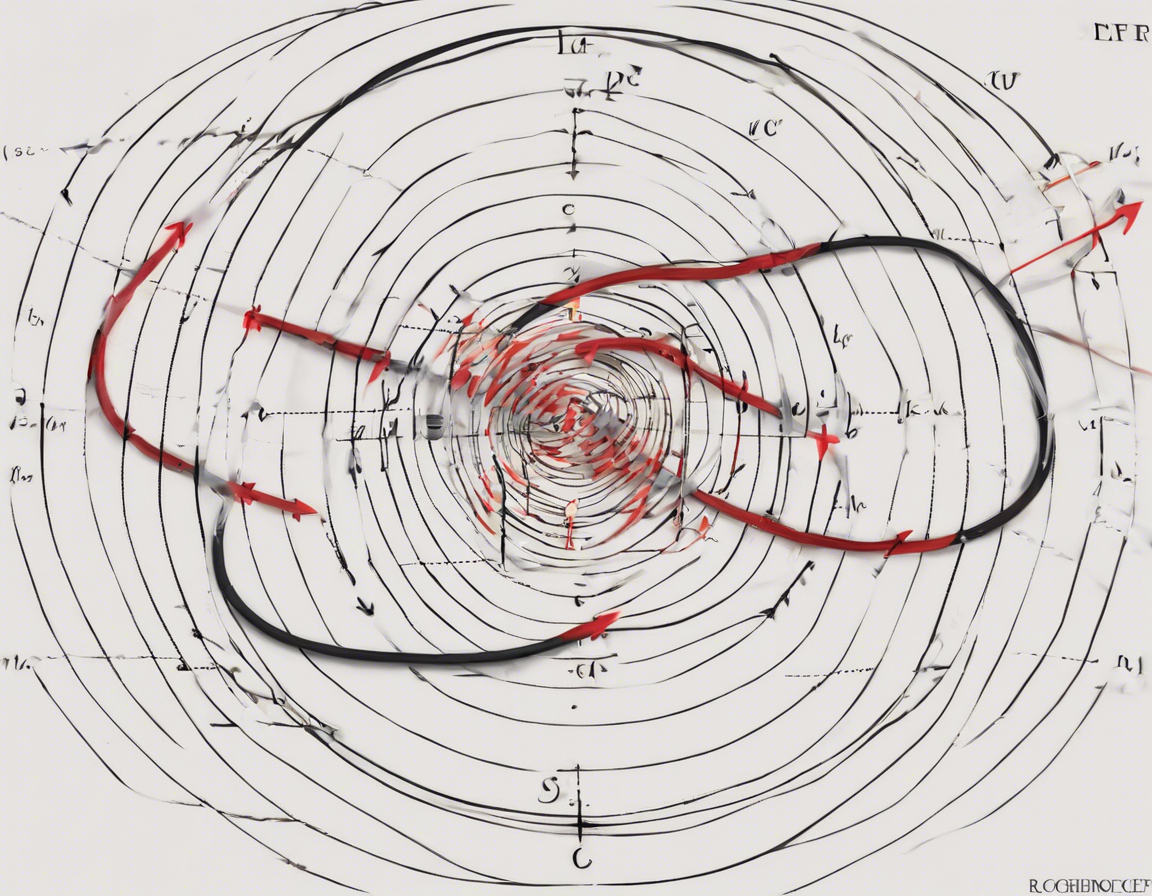Electricity and magnetism are two fundamental aspects of physics that are closely interconnected. The interaction between electrical currents and magnetic fields is a prime example of this synergy. One of the common configurations used to study this interaction is a circular loop carrying a current. When an electric current flows through a conductor, it generates a magnetic field around it. The strength and direction of this magnetic field can be calculated using specific formulas and principles.
In this comprehensive guide, we will delve into the intricacies of calculating the magnetic field of a current in a circular loop, exploring the underlying theory, relevant equations, and practical applications.
Understanding the Magnetic Field
Before we dive into the specifics of calculating the magnetic field of a current in a circular loop, it is essential to grasp some fundamental concepts. According to Ampère’s Law, a current-carrying conductor produces a magnetic field whose strength varies with the distance from the conductor. The direction of this magnetic field can be determined using the right-hand rule.
In the case of a circular loop, the magnetic field lines around the loop take on a specific configuration based on the direction of the current. For a loop with a clockwise current, the magnetic field lines circulate in a certain direction, whereas for a counterclockwise current, the field lines circulate in the opposite direction. This establishes a pattern that can be utilized to calculate the magnetic field’s magnitude at different points.
Calculating the Magnetic Field of a Current in a Circular Loop
The magnetic field (B) at the center of a circular loop can be determined using the following formula:
[ B = \frac{{\mu_0 \cdot I \cdot R^2}}{{2 \cdot (R^2 + x^2)^{3/2}}}, ]
where:
– B is the magnetic field strength at the center of the loop,
– I is the current flowing through the loop,
– R is the radius of the loop, and
– x is the distance from the center of the loop along the axis perpendicular to the plane of the loop.
This formula encapsulates the relationship between the current, radius of the loop, and the distance at which the magnetic field is being calculated. As the distance from the center increases, the strength of the magnetic field decreases due to the inverse cubic relationship between the terms in the denominator.
Practical Applications and Significance
The ability to calculate the magnetic field of a current in a circular loop has significant practical implications across various fields. In electromagnetics, this concept is crucial for designing and analyzing devices such as inductors, solenoids, and transformers. Understanding the magnetic field distribution helps engineers optimize the performance and efficiency of these devices.
Moreover, knowledge of magnetic fields is essential in fields like magnetic resonance imaging (MRI) in medicine, where precisely controlling magnetic fields is imperative for obtaining accurate diagnostic images. By applying the principles of magnetic field calculations, scientists and engineers can enhance the quality and reliability of MRI systems.
Factors Influencing the Magnetic Field Strength
Several factors can influence the strength of the magnetic field around a current-carrying circular loop. Understanding these factors is key to manipulating and controlling magnetic fields in practical applications. Some of the primary factors include:
- Current Intensity (I): The greater the current flowing through the loop, the stronger the magnetic field generated.
- Radius of the Loop (R): A larger radius results in a stronger magnetic field at the center of the loop.
- Distance from the Center (x): The magnetic field strength decreases as the distance from the center of the loop increases, following an inverse cubic relationship.
- Permeability of Free Space ((\mu_0)): The permeability constant determines how well a medium can support the formation of magnetic fields.
By varying these parameters, engineers and researchers can tailor the magnetic field characteristics to suit specific requirements in various applications.
Practical Example: Magnetic Field Calculation
Let’s consider a practical example to illustrate the magnetic field calculation for a current in a circular loop.
Scenario:
– Current (I): 2 Amperes
– Radius (R): 0.05 meters
– Distance from Center (x): 0.1 meters
Using the formula provided earlier, we can plug in the values to calculate the magnetic field strength at the given distance:
[ B = \frac{{4\pi \times 10^{-7} \cdot 2 \cdot (0.05)^2}}{{2 \cdot (0.05^2 + 0.1^2)^{3/2}}} ]
[ B = \frac{{4\pi \times 10^{-7} \cdot 2 \cdot 0.0025}}{{2 \cdot (0.00525)^{3/2}} ]
[ B = \frac{{1.26 \times 10^{-9}}}{{2 \cdot 0.00554}} ]
[ B \approx 113.8 \times 10^{-6} \, Tesla ]
Thus, at a distance of 0.1 meters from the center of the loop, the magnetic field strength is approximately 113.8 microTesla.
Frequently Asked Questions (FAQs)
- What is the direction of the magnetic field around a current-carrying circular loop?
-
The direction of the magnetic field can be determined using the right-hand rule, where the curled fingers represent the direction of the current and the thumb points in the direction of the magnetic field.
-
How does the magnetic field vary with distance from the center of the loop?
-
The magnetic field strength decreases as the distance from the center increases, following an inverse cubic relationship.
-
Can the magnetic field of a circular loop be calculated for points off-axis?
-
Yes, the formula provided can also be used to calculate the magnetic field at any point along the axis perpendicular to the plane of the loop.
-
What is the unit of magnetic field strength in the International System of Units (SI)?
-
The SI unit for magnetic field strength is the Tesla (T), named after the inventor Nikola Tesla.
-
What role does the permeability of free space ((\mu_0)) play in magnetic field calculations?
- The permeability constant determines how easily a medium can support the formation of magnetic fields and is crucial in calculating the strength of the magnetic field.
In conclusion, the ability to calculate the magnetic field of a current in a circular loop is a fundamental skill with widespread applications in various fields, from electromagnetics to medical imaging. By understanding the underlying principles and equations, researchers and engineers can harness the power of magnetic fields to innovate and advance technology.


